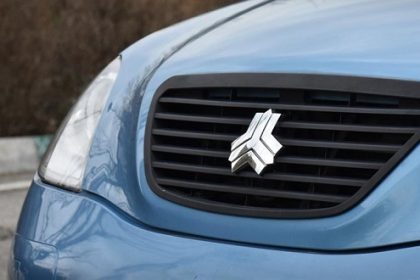26 January 1403 at 11:52
In this article, we will introduce you to 10 strange cars that were all made in 2010. These cars, with their strange designs, have remained in the minds until today.
In the history of the automotive industry, some decades have introduced a wider range of exotic cars to the world than others. The 90s and early 2000s were a golden age for retro-modern designs. Inspired by classic designs, automakers launched strange but popular cars like the Chrysler PT Cruiser and Pontiac Aztek. Despite their unorthodox appearance, these cars were considered to be the forerunners of futuristic designs.
A look at the 10 weirdest cars of 2010
With the beginning of the 2010s, the automotive industry entered a new phase. The global economic recession and tightening of emission regulations forced car manufacturers to focus on improving performance and reducing fuel consumption. As a result, exotic car production declined during the decade. However, some car manufacturers, with innovation and creativity, were able to produce cars that were unique in terms of design and performance.
In the 2020s, we see the return of bold and futuristic designs. The emergence of electric cars and fierce competition between car manufacturers has led to the production of cars with strange designs. Cars like the Tesla Cybertruck and the Lucid Air Sapphire are prime examples of this evolution.
We saw several strange cars in the 2010s; From open-top crossovers to street-legal single-seater racers. In the meantime, the 10 cars introduced below have found a special place in the hearts of car enthusiasts due to their innovations and unique features. Although some of these cars could not achieve significant commercial success, they are undoubtedly worthy of praise and admiration.
Mini Coupe
Offering a fresh take on the design of an automotive icon often leads to dramatic results. But sometimes, products like mini coupe produce different results. Mini coupe, which was unveiled in the early 2010s, was based on the successful design of its previous generation; But with the difference that a shorter roof was added to it. This appearance change, although it looked attractive at first glance, but over time, it created contradictions in the overall design of the car.

The aim of the Mini Coupe design was to create a sports car while maintaining the originality of the Mini to have a more attractive appearance. Undoubtedly, the coupe has succeeded in realizing the first part of this goal, but it ended at a price that its designers might not have anticipated. The car’s short and disproportionate roofline, along with the dual paintwork that emphasized the asymmetry, gave it a controversial look. In addition, the lower part of the car has had a few changes compared to the hatchback model, and this has contributed to the reduction of the overall appeal of the coupe.
As expected, the reception of the Mini Coupe was not so warm and the car was discontinued after a few years of production. Currently, second-hand examples of this car can be found in the market at reasonable prices, and enthusiasts can easily get one of them.
Nissan Murano CrossCabriolet
The Nissan Murano Cross Cabriolet has made it to lists of weird cars many times. The reasons for this are quite clear. According to reports, the original idea of this car was leaked from the creative mind of Carlos Ghosn, the former CEO of Nissan. However, he seems to be the only person who was optimistic about the commercial potential of this product.
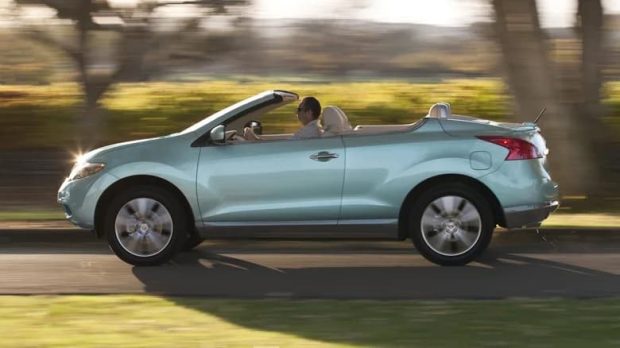

Since its unveiling, the Murano Cross Cabriolet has drawn mixed reactions from critics and buyers alike. The cabin of this car had a more luxurious level than other Nissan models at that time; Of course, its price was also increased according to these facilities. As expected from a full-size convertible, the Murano Cross Cabriolet is supple and absorbs road bumps well. The performance of the 3.5-liter V6 engine with a power of 265 horsepower is also considered acceptable.
Despite all these features, the specific and different design of the Murano Cross Cabriolet has been one of the most important reasons for its relatively low sales. Also, the high price of this car compared to other Nissan products has limited its target market.
Finally, Nissan decided to stop production of the Murano Cross Cabriolet after the 2014 model year. This decision indicated the failure of this model in attracting customers and achieving the set sales goals.
Morgan 3-Wheeler
Many of the cars on this list were never designed to be exotic, though they ended up being that way. But Morgan 3-wheeler was designed from the beginning with the aim of creating a different and special car. This car presented a unique image of the car world with one less wheel than normal cars and an open front engine.


The design of the 3-wheeler was derived from the classic Morgan cars of the 20s and 30s. At that time, tricycles were very popular in Britain due to the tax exemption. Although that tax advantage is long gone, the revived Morgan 3-Wheeler, introduced in 2011, remains true to its original design.
The Morgan 3-Wheeler will roll off the production line in 2021 after a decade of production and sales of around 2,500 units. This car became one of the best-selling models in the history of Morgan and found a special place in the hearts of classic and sports car enthusiasts.
The spirit of the 3-wheeler now lives on in the Morgan Super 3. Although in Super 3, the engine has been moved into the body, but the overall design and classic feel is still preserved.
Toyota Mirai
The first generation Toyota Mirai was a car that pushed the boundaries of technology and design in the automotive industry. One of the most prominent features of this car was its innovative engine. As one of the first hydrogen vehicles to hit the market, the Mirai took a big step towards reducing emissions and offered a more attractive option to battery electric vehicles (BEVs) for consumers with limited access to hydrogen refueling infrastructure. However, the limited access to hydrogen refueling stations limited the range of this car to urban areas.
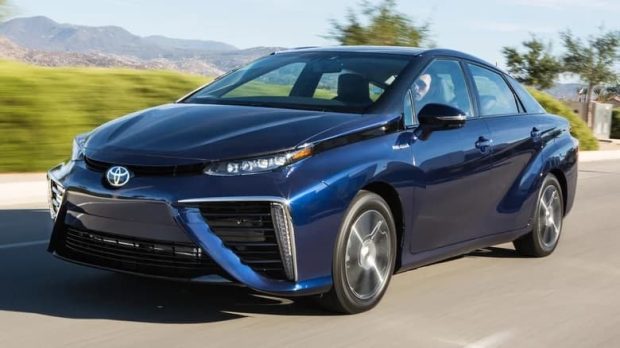

But what made the first generation Mirai a unique car was not just its advanced technology. The exterior design of this car was one of the most controversial topics at the time of its launch. Despite its powerful specs and spacious interior, the first-generation Mira’s design looked as if it had come out of a failed design experiment. Unconventional lines and sharp angles presented an incoherent image of this car.
With the design of the first generation Mirai, Toyota sought to create a car with a futuristic appearance. But this effort had the opposite result. Fortunately, with the release of the second generation Mira in 2021, Toyota was able to improve the design of this car and give it a more attractive and harmonious appearance. The second generation Mirai is still a leading car in the field of hydrogen technology, but without sacrificing its attractiveness for innovation.
Aston Martin Cygnet
The Aston Martin Signet is one of the strangest cars ever produced by a luxury brand. This car, which was produced by one of the most luxurious car brands in the world, was actually a response to the tightening of emission regulations at the global level. Using the Toyota IQ platform and a small 1.3-liter engine, the Signet significantly reduced the average emissions of Aston Martin’s products and saved the company from paying heavy fines for non-compliance with environmental standards.
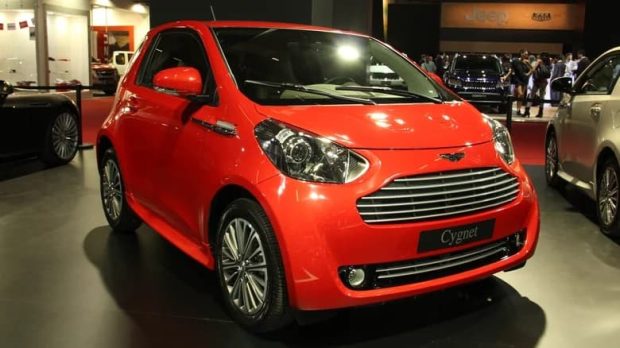

However, Cygnet also faced serious challenges. The very high price of this car compared to the Toyota IQ, which was the basis of its construction, is one of the most important reasons for its lack of commercial success. Although the interior of the Signet, using the best materials and Aston Martin’s special design, offered unparalleled luxury to the passengers, the significant price difference with the base model questioned the justification of its purchase for many customers.
Nevertheless, the idea of producing a small luxury city car, especially for the densely populated and urban markets, was not a bad idea. But unfortunately, the number of customers willing to pay a hefty price for a small-sized Aston Martin was much lower than Aston Martin had hoped. Finally, the Cygnet was discontinued after two years of production in 2013 due to lack of market acceptance.
Nissan Juke-R 2.0
From the beginning, Nissan Juke found a special place among crossovers in the market with its unique design. But it will never match the Nissan Juke-R 2.0.
This car, which was first unveiled in 2015, is the result of combining Juke’s body with the powerful beating heart of Nissan GTR. The GTR turbocharged V6 engine, producing about 600 horsepower, has given this crossover a stunning acceleration. The four-wheel drive system and sports GTR dashboard are also used without changes in Juke-R 2.0.


But the Juke-R 2.0 isn’t just a moving exhibition of powerful parts. With precise engineering, this car has great dynamic capabilities and can challenge strong competitors on the race track. Initially, this car was supposed to be a unique example, but due to the demand of wealthy buyers, Nissan decided to produce a limited number of this car. Out of the five produced, three were sold to private customers. Unfortunately, two of these three cars had an accident; But fortunately, one of them was sold in 2020 at a price of about 720,000 dollars.
Although the price of this particular car seems very high, owning a Nissan Juke-R 2.0 is a unique and proud experience.
Volkswagen XL1
If you ask most enthusiasts what their idea of an efficient diesel car is, they’ll probably point to the big, boring fleet cars that have dominated the diesel market for years. But the fact is that the peak efficiency in diesel cars is far beyond these stereotypes. By creating a sporty and futuristic car, Volkswagen defined new standards in the field of diesel fuel consumption.


The Volkswagen XL1, equipped with a two-cylinder diesel engine and an electric motor, managed to claim the title of the most efficient production diesel car in the world, recording a stunning fuel economy of 261 mpg, beating all the competition.
To achieve such an amazing record, Volkswagen worked closely with an Austrian supplier to develop an ultra-light carbon composite monocoque chassis. Then, the car was assembled at the prestigious factory in Osnabruck, Germany. However, production of this particular car was limited to 250 units and priced at over $100,000 each.
Today, low-run examples of this unique car remain highly sought after by collectors. For example, in 2022, one of these cars was sold at a Bonhams auction for €97,750 (about $103,000).
Renault Twizy
One of the most common criticisms of electric cars is the monotony and boring driving experience. But Renault Twizzy appeared as an exception to this rule and showed that an electric car can be both interesting and different.
Although the Twizy isn’t very fun to drive in cold weather and its practicality is limited, it’s definitely not a boring car. This car is actually a “plastic box on wheels” that Renault has made no effort to hide its simple and minimalist design. Features that are standard on most cars, such as windows and doors, were offered as options on the Twizy. However, considering the initial price of this car, the cost of adding these options was not significant.


In the conducted tests, this car was described as a unique and attention-grabbing car that was able to attract many opinions. Despite its small and simple appearance, Twizy had a decent performance and could reach a speed of more than 50 miles per hour, which is more than enough to navigate busy European cities. However, its limited cruising range and unusual design made the Twizy a special vehicle suitable for limited use.
Despite these limitations, the Twizy was such a success for Renault that the company unveiled its next model, the Mobilize Duo, in 2024.
Infiniti FX Vettel
At first glance, Vettel’s Infiniti FX may not seem as exotic as many of the cars on this list. But with a little more attention, the strangeness of this car is revealed. This car, which borrows its name from the legendary Formula One champion, Sebastian Vettel, is the result of his close collaboration with Infiniti.
Due to Infiniti’s sponsorship of the Red Bull Formula One team at the time, Vettel was already using an FX unit and was looking to improve its performance. In response to this request, Infiniti engineers got to work and made significant changes to this car. Increasing the output power of the 5.0-liter V8 engine by 30 horsepower and removing the speed limiter were among the most important changes.
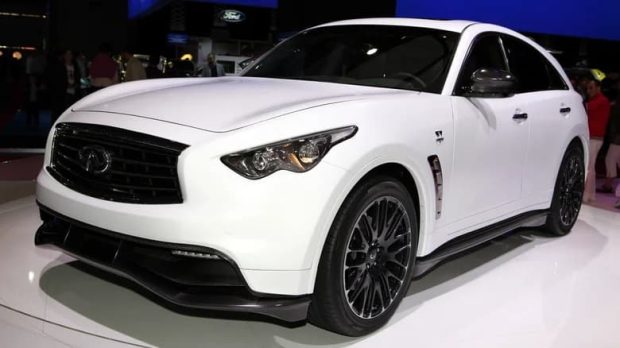

In addition to improving the performance, the exterior design of this car also underwent fundamental changes. The front bumper of the car was inspired by Formula One racing cars and was designed using carbon fiber, which gave it a sporty and attractive look. However, the production of this car was limited to a very limited number and its high price made only a small number of luxury and special car enthusiasts buy it. At the time of launch, the price of this car in the UK was more than 150,000 dollars, which is much higher than the price of the standard FX version.
Infiniti’s decision to produce such a car with a very high price and relatively minor performance changes has always been questionable. Some believe that the purpose of producing this car was to increase awareness of the Infiniti brand among wealthy buyers. However, it seems that this strategy did not pay off and Infiniti was eventually forced to leave the UK and European markets.
BAC Mono
Despite its purely racing appearance and single-seater design, the BAC Mono was designed as a street-legal vehicle, and limited numbers made it to the US market. It joins a rare group of road-licensed British racing cars, including the Ariel Atom and Radical RXC, but it’s probably the strangest looking.
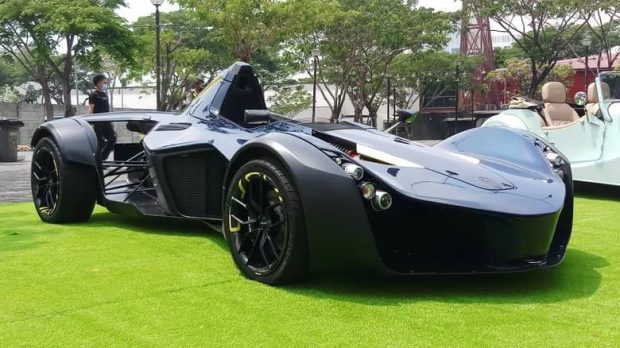

With acceleration from 0 to 100 in less than 2.7 seconds and a maximum speed of 270 km/h, Mono displays exemplary power. BAC even offers a custom racing livery to complement the Mono’s racing look so that drivers can have a complete and seamless driving experience.
Despite the high price of about 150 thousand dollars, Mono still has its fans. Buyers of this car are looking for an exciting driving experience with one of the most exotic road cars on the market and are willing to pay for this special experience.
RCO NEWS















